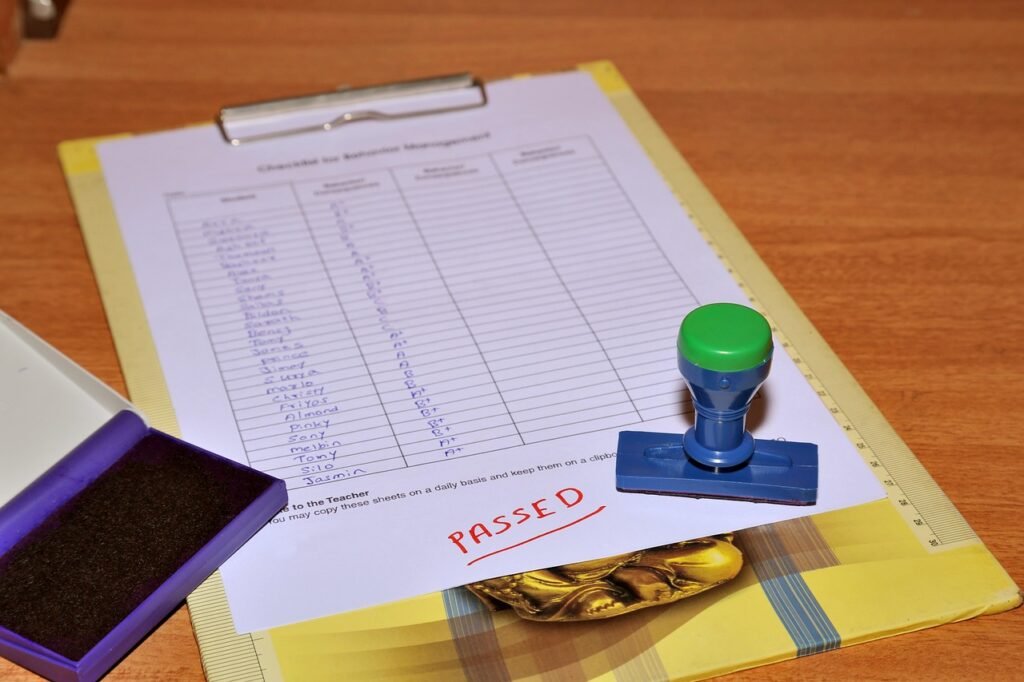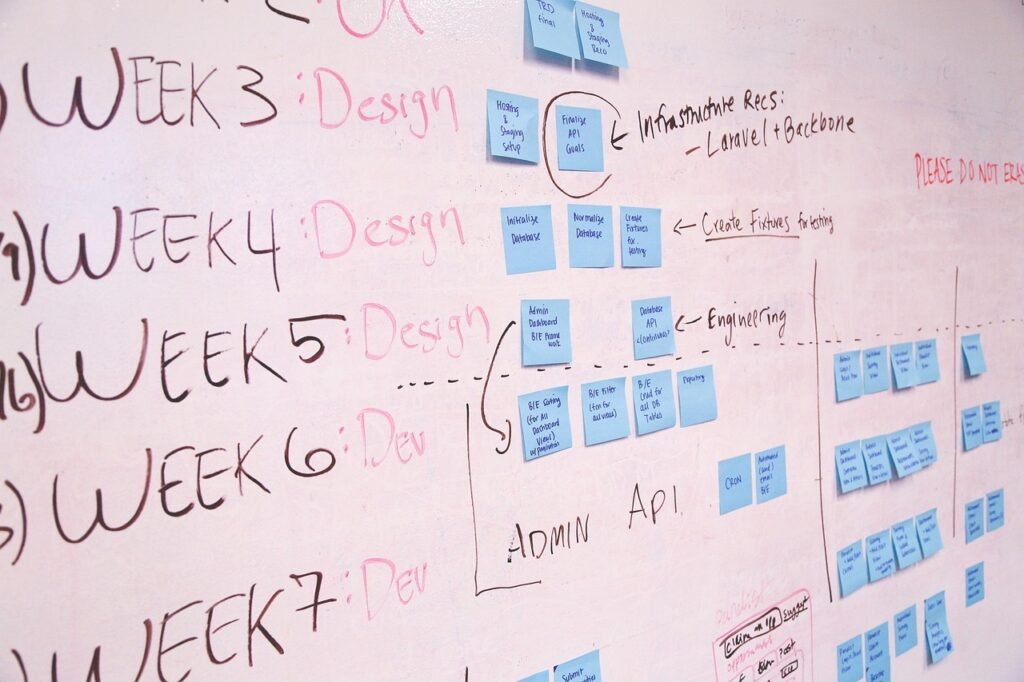
The Importance of Communication
Effective communication is the foundation of strong workplace relationships and a thriving organizational culture.
It drives collaboration, boosts productivity, and fosters a positive atmosphere where employees feel connected and engaged.
When individuals communicate well, they can share ideas seamlessly, address issues promptly, and work together more efficiently.
Imagine a scenario where team members are unsure of their roles and responsibilities because of unclear communication.
This confusion can lead to mistakes, missed deadlines, and ultimately, frustration.
On the other hand, clear and open communication can prevent these issues by ensuring everyone is on the same page and understands their contributions to the team’s success.
One key aspect of communication in the workplace is its ability to build trust.
When colleagues communicate openly and honestly, they are more likely to trust each other.
This trust is essential for creating a supportive work environment where employees feel comfortable sharing their thoughts and concerns.
For example, a team member who feels trusted and valued is more likely to contribute innovative ideas and take initiative, knowing their input will be respected.
Effective communication also plays a significant role in conflict resolution.
In any workplace, disagreements are inevitable.
However, how these conflicts are managed can make a big difference.
Clear, respectful communication can help resolve disputes by allowing all parties to express their viewpoints and work toward a mutually beneficial solution.
For instance, if two coworkers disagree on a project approach, open dialogue can help them find common ground and move forward collaboratively.
Moreover, communication skills are crucial for leadership.
Leaders who communicate effectively can inspire and motivate their teams, providing clear direction and feedback.
They can articulate the organization’s vision and goals, helping employees understand how their work contributes to the bigger picture.
This alignment can drive higher engagement and commitment from the team.
In summary, prioritizing communication in the workplace is not just about exchanging information; it’s about building relationships, fostering trust, and creating an environment where everyone can thrive.
Whether it’s through active listening, clear messaging, or empathetic interactions, strong communication skills are integral to a successful and harmonious workplace.
Active Listening

Active listening involves fully focusing on the speaker, understanding their message, and responding thoughtfully.
This skill is significant because it helps build trust and ensures that all parties feel heard and valued.
Global recruiters emphasize its importance, ranking it as a critical communication skill for job candidates.
To practice active listening, techniques such as paraphrasing and asking clarifying questions are incredibly useful.
Paraphrasing involves restating the speaker’s message in your own words to ensure understanding.
For example, “So what you’re saying is…” shows the speaker that you are engaged and grasping their point.
This simple practice not only confirms your understanding but also demonstrates respect and attentiveness.
Asking clarifying questions is another effective technique.
Questions like “Can you elaborate on that?” or “What do you mean by that?” show that you are genuinely interested in understanding the speaker’s perspective.
These questions can also help you gather more information, making the conversation more productive and meaningful.
Body language plays a vital role in active listening.
Simple gestures such as nodding, maintaining eye contact, and leaning slightly forward can show that you are engaged and interested.
These nonverbal cues reinforce the message that you are paying attention, making the speaker feel more comfortable and valued.
One common pitfall to avoid is interrupting the speaker.
It’s tempting to jump in with your thoughts or solutions, especially if you think you already know what the speaker is going to say.
However, interruptions can disrupt the speaker’s train of thought and make them feel undervalued. Instead, wait for them to finish before offering your input.
This not only shows respect but also ensures you fully understand their message before responding.
Finally, it’s important to respond appropriately.
Your response should reflect that you’ve listened and understood.
For instance, saying, “I understand how you feel about this project, and I think we can find a solution together,” shows empathy and a willingness to collaborate.
This kind of response can foster a more cooperative and positive work environment.
Incorporating these active listening techniques can significantly enhance your communication skills, making your interactions more effective and meaningful.
Nonverbal Communication

Body language, facial expressions, and eye contact can all influence how our words are perceived.
Positive nonverbal cues, such as maintaining eye contact, smiling, and using open body language, can enhance communication by making interactions more engaging and reassuring.
For instance, maintaining eye contact during a conversation signals confidence and attentiveness.
A warm smile can make others feel at ease, while an open posture can convey approachability.
By being mindful of your nonverbal signals, you can improve your interactions and strengthen workplace relationships.
Imagine you’re in a meeting, and someone is presenting an idea.
If you sit back with your arms crossed and avoid eye contact, it might signal disinterest or disagreement, even if that’s not your intention.
Instead, leaning slightly forward, maintaining eye contact, and nodding occasionally can show that you’re engaged and supportive.
Facial expressions are equally important.
A genuine smile can diffuse tension and create a positive atmosphere.
On the flip side, a frown or furrowed brow can unintentionally communicate frustration or skepticism.
Being aware of your facial expressions can help ensure you’re sending the right message.
Gestures can also play a crucial role. Hand movements can emphasize points and make your communication more dynamic.
However, be careful not to overdo it, as excessive gestures can be distracting.
For example, pointing to emphasize a key point can be effective, but too much pointing might come across as aggressive.
Touch is another form of nonverbal communication, though it should be used with caution in professional settings.
A firm handshake can convey confidence and respect, setting a positive tone for an interaction.
However, it’s important to be mindful of personal boundaries and cultural differences when it comes to physical contact.
Your tone of voice is a powerful tool in nonverbal communication.
It’s not just about what you say, but how you say it.
A warm, enthusiastic tone can energize a team meeting, while a calm and steady voice can reassure colleagues during stressful situations.
Conversely, a monotone voice might indicate boredom or lack of interest, which can demotivate others.
Lastly, consider your physical space. How you position yourself in a room can communicate a lot.
Sitting or standing too close to someone might invade their personal space, while being too far away can seem detached.
Finding the right balance can help you connect more effectively with others.
Clarity and Conciseness

Clear and concise communication is crucial for reducing misunderstandings and ensuring your message hits the mark.
The goal is to convey your thoughts as straightforwardly as possible, avoiding unnecessary jargon or complex language that can confuse your audience.
Consider the difference between these two statements: “We need to synergize our efforts to maximize our operational efficiency” versus “We need to work together to be more efficient.”
The latter is easier to understand and leaves less room for misinterpretation.
When you’re clear and to the point, you make it easier for others to grasp your ideas quickly.
This is particularly important in fast-paced work environments where time is of the essence.
Whether you’re writing an email, giving a presentation, or having a one-on-one conversation, sticking to simple and direct language can make a world of difference.
Here’s another example: Instead of saying, “The implementation of our new strategy will necessitate a paradigm shift in our organizational workflow,” you could say, “Our new strategy will change how we work.”
The simpler version is not only easier to understand but also more likely to be remembered and acted upon.
In meetings, being concise helps keep everyone focused and engaged.
Long-winded explanations can lose your audience and dilute your message.
Try to summarize key points and use bullet points or numbered lists for clarity.
For instance, if you’re outlining a new project plan, break it down into manageable steps and highlight the most important aspects first.
Email communication is another area where clarity and conciseness are invaluable.
Start with a clear subject line that captures the essence of your message.
In the body of the email, get straight to the point.
Use short paragraphs and bullet points to make your email easy to scan.
For example, instead of writing a long paragraph about a project update, break it into bullet points like this:
– Project Status: On track
– Next Steps: Finalize design by Friday
– Issues: Awaiting client feedback
This approach helps ensure that your email is not only read but also understood and acted upon.
Remember, clarity is not just about the words you use but also about structuring your message in a logical way.
Start with the main point, provide necessary details, and end with a clear call to action or summary of what you need from the other person.
By doing so, you make it easy for others to follow your train of thought and respond appropriately.
Empathy in Communication

Empathy in communication is about putting yourself in someone else’s shoes and genuinely understanding their feelings and perspectives.
It’s a game-changer in the workplace, transforming ordinary interactions into meaningful connections.
When you show empathy, you signal that you care about your coworkers’ experiences and emotions, which can build stronger, more supportive relationships.
Imagine a scenario where a team member is visibly stressed about a looming deadline.
Instead of brushing it off or offering a generic “it’ll be fine,” take a moment to acknowledge their feelings.
You might say, “I see you’re under a lot of pressure right now.
How can I assist you to make this easier?” This simple act of recognizing their stress and offering help can make a world of difference.
Empathy isn’t just about the words you use; it’s also about active listening and nonverbal cues.
When a coworker is talking about a problem they’re facing, give them your full attention.
Nod in agreement, maintain eye contact, and refrain from interrupting.
These actions show that you value their perspective and are truly engaged in the conversation.
Another key aspect of empathetic communication is validating feelings.
If a colleague is upset about a mistake they made, saying something like, “It’s completely understandable to feel this way; mistakes happen to all of us,” can be incredibly reassuring.
It helps them feel less isolated in their experience and more connected to the team.
Empathy also plays a crucial role in conflict resolution.
When tensions rise, taking the time to understand each party’s viewpoint can lead to more effective solutions.
For example, if two team members are at odds over a project approach, acknowledging their concerns and feelings can pave the way for a more open and productive discussion.
Remember, empathy can be expressed in many ways, from offering a listening ear to simply being present for someone going through a tough time.
It’s about creating an environment where everyone feels valued and understood.
When you make empathy a cornerstone of your communication style, you contribute to a more cohesive, trusting, and collaborative workplace.
By being empathetic, you foster a culture of mutual respect and support, which not only enhances workplace relationships but also boosts overall morale and productivity.
So, next time you interact with a coworker, consider how you can infuse a little more empathy into the conversation.
Constructive Feedback

Giving and receiving feedback is crucial for both personal and professional development.
When you provide feedback thoughtfully, it can drive improvement and foster a supportive work environment.
The key to delivering constructive feedback is to focus on specific actions or results and to offer suggestions for enhancement.
For instance, rather than saying, “Your presentation was boring,” you could say, “Your presentation would be more engaging if you included more visual aids and interactive elements.”
This approach makes it clear that your goal is to help your colleague improve and not to criticize them personally.
It’s about pointing out areas for growth in a way that motivates and inspires.
Timing also matters.
Provide feedback soon after the event so it’s still fresh in everyone’s mind.
However, make sure the timing is appropriate and doesn’t catch the person off guard.
For example, giving feedback immediately after a high-stress meeting might not be the best moment.
Instead, schedule a time to discuss it when you both can focus without distractions.
Another essential aspect is to balance positive and negative feedback.
Highlight what was done well before moving on to areas that need improvement.
This balanced approach can make the person more receptive to the feedback.
For example, “You did a great job summarizing the project’s objectives; adding more detailed examples will make your presentation even stronger.”
Active listening plays a significant role when giving feedback. Allow the person to share their perspective and listen without interrupting.
This shows that you value their viewpoint and are open to a two-way dialogue.
If a colleague explains their challenges, acknowledging their efforts and offering support can make the feedback more constructive and less daunting.
Always aim to be specific.
Instead of saying, “You need to improve your communication,” pinpoint what exactly needs to be enhanced: “During team meetings, it would be helpful if you could provide more detailed updates on your projects.”
Using these strategies ensures that your feedback is constructive, fostering a culture of continuous improvement and mutual respect.
Adaptability in Communication

In today’s diverse workplaces, the ability to adapt your communication style is indispensable.
Different situations and audiences require different approaches, and flexibility in how you convey your message can significantly enhance understanding and cooperation.
Picture this: you’re presenting to a room full of engineers.
Using technical jargon and data-heavy slides will likely resonate with them.
Now, imagine delivering the same presentation to the marketing team.
You might focus more on the story behind the data, using visual aids and relatable examples.
Adapting your communication to suit your audience ensures that your message is received effectively, fostering better teamwork and collaboration.
One way to become more adaptable is to be observant.
Pay attention to how different colleagues prefer to communicate.
Some might favor detailed emails, while others respond better to quick, informal chats.
Tailoring your approach to fit these preferences shows respect for their communication style and can lead to more productive interactions.
Consider also the context of the communication.
A formal report to senior management will naturally differ from a casual update to your immediate team.
Being mindful of the situation helps you choose the right tone, level of detail, and medium.
For example, a quick instant message might suffice for a simple question, but a detailed email or a meeting might be better for complex topics.
Adapting your communication also involves being receptive to feedback.
If a colleague indicates they didn’t quite understand your message, take it as an opportunity to adjust your approach.
Clarify and simplify your points, and be open to finding new ways to convey your ideas more effectively.
Additionally, cultural sensitivity is crucial in a diverse workplace.
Different cultures have different communication norms, and being aware of these can prevent misunderstandings and build stronger relationships.
For instance, some cultures might value directness, while others may prefer a more indirect approach.
Adapting your style to be culturally sensitive can make your communication more inclusive and respectful.
By honing your adaptability, you can navigate the varied communication landscapes of your workplace with ease, ensuring that your message always hits the mark and fostering a more cohesive, understanding environment.
